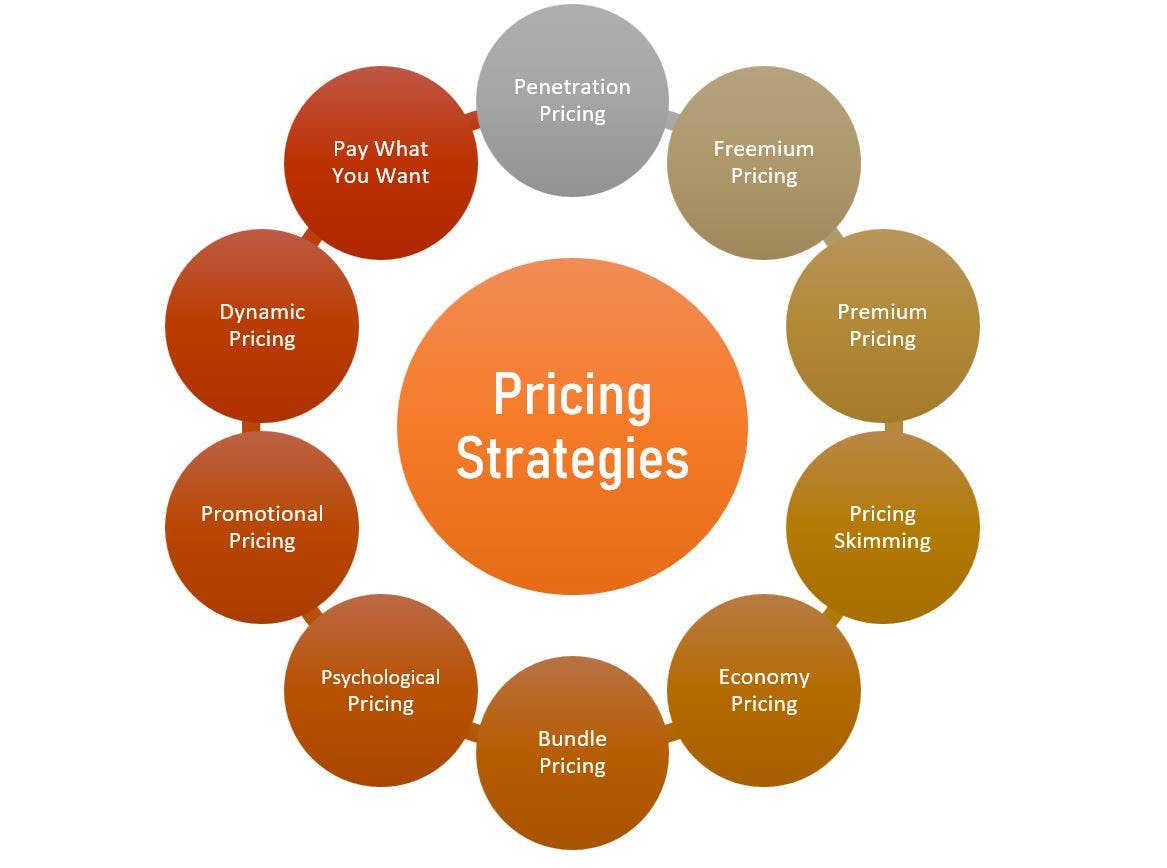Just How a Strong Pricing Strategy Can Boost Customer Loyalty and Retention
Just How a Strong Pricing Strategy Can Boost Customer Loyalty and Retention
Blog Article
Recognizing Rates Approaches: An Overview to Boosting Competition
In a significantly competitive landscape, understanding rates approaches is crucial for companies aiming to improve their market placement. Recognizing rival prices and the psychological facets that impact customer habits can produce a nuanced approach to pricing that resonates with target audiences.
Importance of Pricing Techniques
In the affordable landscape of company, the value of prices strategies can not be overstated. Pricing works as an essential bar for businesses, influencing both market positioning and customer perception. A distinct pricing method can improve profitability, drive sales, and establish a competitive side.

Understanding customer actions is important in crafting rates strategies. Insights into cost level of sensitivity, viewed worth, and affordable offerings enable services to adapt their pricing designs appropriately. In addition, normal analysis of pricing efficiency is essential to react to market dynamics and customer fads.
Eventually, a robust prices technique is indispensable not just for profits generation however additionally for long-lasting service feasibility. It forms brand name identification, affects consumer commitment, and plays a pivotal duty in the general advertising and marketing approach. Businesses have to invest time and resources in creating and improving their prices approaches to grow in an ever-evolving marketplace.
Kinds of Pricing Models
Exactly how do organizations identify the most effective means to value their product and services? The answer hinges on comprehending different rates versions, each matched to different market problems and service objectives.
One common version is cost-plus prices, where a fixed percent is contributed to the complete price of production. This technique makes sure that all costs are covered while creating a profit. Alternatively, value-based pricing concentrates on the regarded worth of the product to the customer, allowing organizations to charge a premium based upon consumer need and contentment.
One more approach is dynamic rates, typically used in sectors such as traveling and hospitality. This model changes prices in real-time based upon market demand, rival rates, and various other exterior factors. Infiltration prices is likewise significant, where companies at first established lower prices to get in a competitive market and gain market share, later on raising prices when a client base is developed.
Finally, skimming pricing involves establishing high preliminary costs for brand-new or innovative products, profiting from early adopters before decreasing prices with time. Comprehending these versions makes it possible for companies to purposefully position themselves in the industry, straightening their rates techniques with their overarching goals.

Studying Rival Prices
Comprehending competitor rates is an important aspect of developing an effective pricing approach. Organizations should perform detailed evaluations of their competitors' prices frameworks to determine market positioning, evaluate potential threats, and reveal possibilities for differentiation. This requires collecting information on rivals' rates, marketing approaches, and any type of rewards or discount rates they use.
Analyze their prices models, consisting of any tiered prices systems, subscription fees, or mass discount rates - Pricing Strategy. Recognizing the reasoning behind these pricing approaches can offer understandings right into consumer behavior and preferences.
Consider the implications of competitor prices on your worth recommendation. If rivals supply similar items at lower rates, you might require to highlight special selling points or boost client solution to justify your prices.
Eventually, analyzing rival pricing not only notifies prices decisions yet also helps companies continue to be competitive in a frequently progressing market landscape.
Psychological Prices Methods
Emotional prices strategies take advantage of customer psychology to influence investing in decisions and boost the viewed worth of products. One common technique is appeal rates, where prices are set simply listed below a round number, such as $9.99 rather of $10.00.
Another reliable strategy is reputation prices, where greater imp source prices are connected with better. This method interest consumers' need for condition and exclusivity, positioning products as premium offerings. Additionally, packing products with each other at an affordable price can develop a sense of worth, triggering consumers to purchase even more than they initially intended.
Shortage prices, which emphasizes limited schedule or time-sensitive deals, can also set off urgency, pressing consumers to act swiftly. By recognizing and applying these mental rates techniques, organizations can efficiently shape customer assumptions, drive sales, and eventually boost competitiveness out there.
Implementing and Readjusting Strategies

As soon as data is gathered, companies ought to examine their prices versions versus existing market conditions. This may entail embracing dynamic prices strategies that permit real-time changes based upon supply and need changes. Organizations should also take into consideration segmenting their market to tailor costs for different client groups, boosting regarded worth and driving sales.
Frequently reviewing pricing techniques is essential. This can be achieved with A/B testing or customer responses, which offers understandings into the performance of present prices. Furthermore, organizations need to continue to be flexible to adjust to unexpected modifications, such as economic slumps or arising rivals.
Conclusion
Finally, efficient prices approaches serve as a critical element for companies aiming to improve competitiveness in a rising and fall market. By leveraging various rates designs, analyzing competitor rates, and using emotional methods, business can much better place themselves and connect value to customers. On a regular basis adjusting these methods in action to market dynamics and customer actions is vital for ensuring lasting sustainability and profitability, inevitably driving sales and cultivating customer loyalty.
In a progressively competitive landscape, grasping prices methods is vital for companies intending to enhance their market setting. Recognizing competitor rates and the emotional aspects that influence consumer actions can create a nuanced method to prices that reverberates with target learn the facts here now audiences.Recognizing rival pricing is an essential aspect of developing an efficient prices method. Evaluate their prices models, consisting of any kind of tiered rates systems, membership costs, or mass discount rates. By leveraging different rates models, evaluating rival pricing, and using psychological strategies, business can much better place themselves and interact worth to customers.
Report this page